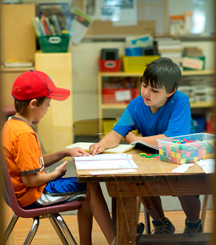It’s a preventable problem that’s increasing along with the proliferation of MP3 players and iPods with earbuds: More than 5.2 million American youngsters suffer permanent hearing impairment due to preventable noise assault, according to the US Centers for Disease Control and Prevention. Recent studies in the professional journal ENT Today approximate that 16 percent of American teens have noise-induced hearing loss (NIHL).
One insidious aspect of this growing public health danger, warn experts, is that like smoking, the extent of the harm isn’t readily apparent until after damage is done.
“Few people realize that ‘temporary’ losses [ringing in the ears from music players, concerts, etc.] are actually cumulative and will sooner or later lead to permanent hearing loss,” says Martin Pienkowski, PhD, professor at Salus University’s George S. Osborne College of Audiology in Elkins Park, PA.
How noise causes hearing problems
Human hearing mechanisms are intricate and delicate, including tiny nerve fibers, blood vessels, membranes and bones that are easily susceptible to irreversible injury. Sounds at or over 85 decibels (dB) “drive violently” across these fragile transmission parts, explains audiologist Yell Inverso, AuD, PhD, manager of Outpatient Therapeutic and Rehabilitation Services at Nemours/Alfred I. duPont Hospital for Children in Wilmington, DE.
Studies have shown that most portable personal music systems are used above 90 dB, notes Kathleen Riley, AuD, educational audiologist at the Delaware School for the Deaf & Delaware Statewide Programs for the Deaf, Hard of Hearing and Deaf-Blind in Newark, DE. An hour of noise at this level is detrimental and would not be permitted without protection for adult workers under federal regulations, Dr. Riley says. Yet there are no such regulations to protect children from the dangers of noise.
At 105 dB, an iPod is too loud, says Dr. Inverso. “Five minutes is too long. If someone can hear the sound outside the headphones or earbuds, it’s too loud.” Ditto with hearing music outside of a car. Furthermore, there is little regulation of babies’ toys, which are often extremely loud and used very close to the ears. Warns Dr. Riley: “The pressure reaching a child is significantly more than that reaching the adult.” She also emphasizes that young children can’t express when their ears are ringing or that they are having trouble distinguishing your voice over background noise.
Loss of hearing and learning problems
A child’s early years, up to age 3, are critical for language acquisition; elementary school years are vital for comprehension, spelling, reading and writing. Yet Dr. Inverso points out that high-pitched and consonant sounds — like distinguishing “s” or “th” — are among the first affected by noise damage. And these sounds are not in the range detected by most routine hearing screenings.
Adults have a knowledge base that helps them infer words from context, whereas young children lack that. They don’t understand what they’re missing, according to Dr. Riley. Small hearing losses therefore profoundly impact children’s development.
It’s hard for kids with NIHL to hear in school-type settings and when there is background noise. Students with hearing loss often lose concentration and do not perform as well in school as healthy hearing peers. This can result in behavior and social problems.
How to prevent hearing loss in kids
After you turn down the iPod, consider all the sources of unnatural noise that blast your child: movies, band practice, lawn equipment, carnivals.
- Consult lists of the decibel levels of common noises like the one published by the American Speech-Language-Hearing Association so that you and your child understand when sound becomes a health danger.
- Download free sound meter apps for smart phones (options include dB Volume Meter, Too Loud? and DeciBel), or buy or borrow a sound meter to measure household and community noise hazards for yourself.
- Whenever possible, reduce the decibel level of the noise. Increase distance from and decrease time exposure to it.
- Wear appropriate ear protection and follow guidelines to ensure that they’re effective. Choose ear muffs, disposable earplugs or specialty earplugs that allow musicians to discern pitch without distortion.
Ear protection should be as routine as bike helmets, seat belts and smoke-free buildings. Urges Dr. Inverso: “Treat ears as a delicate, nonrenewable resource.”
Ann L. Rappoport is a contributing writer to MetroKids.





